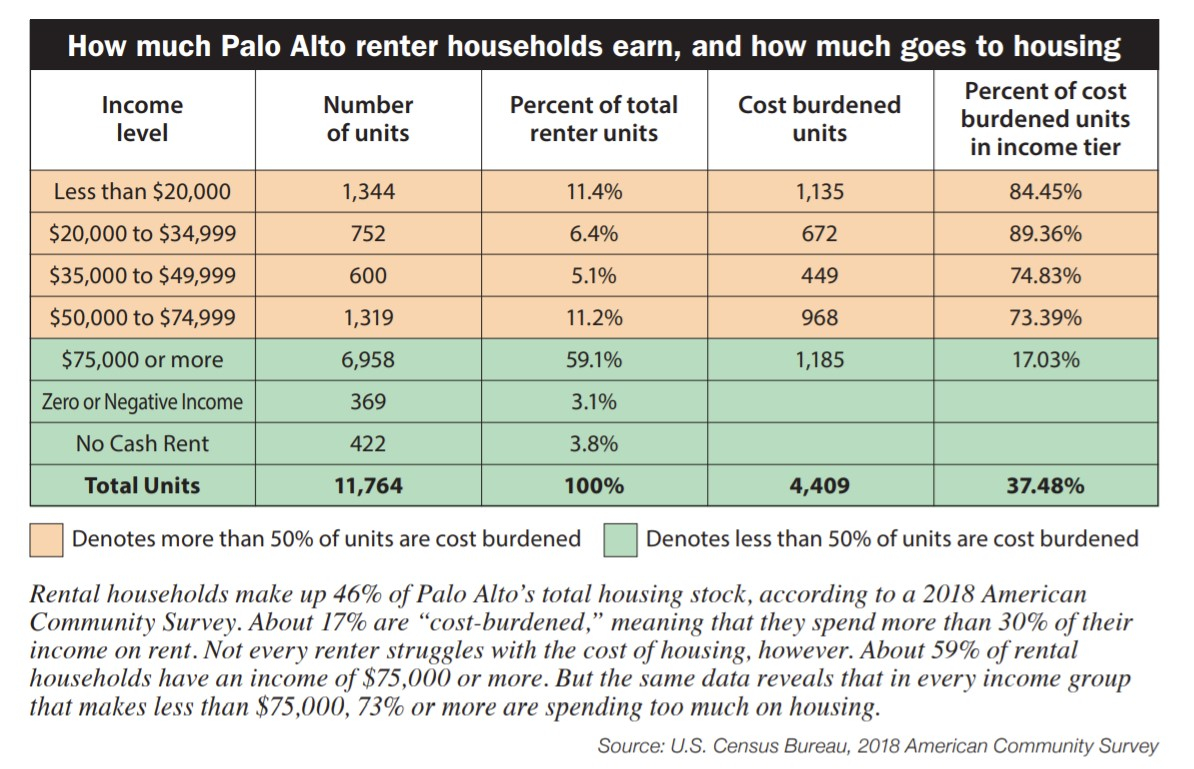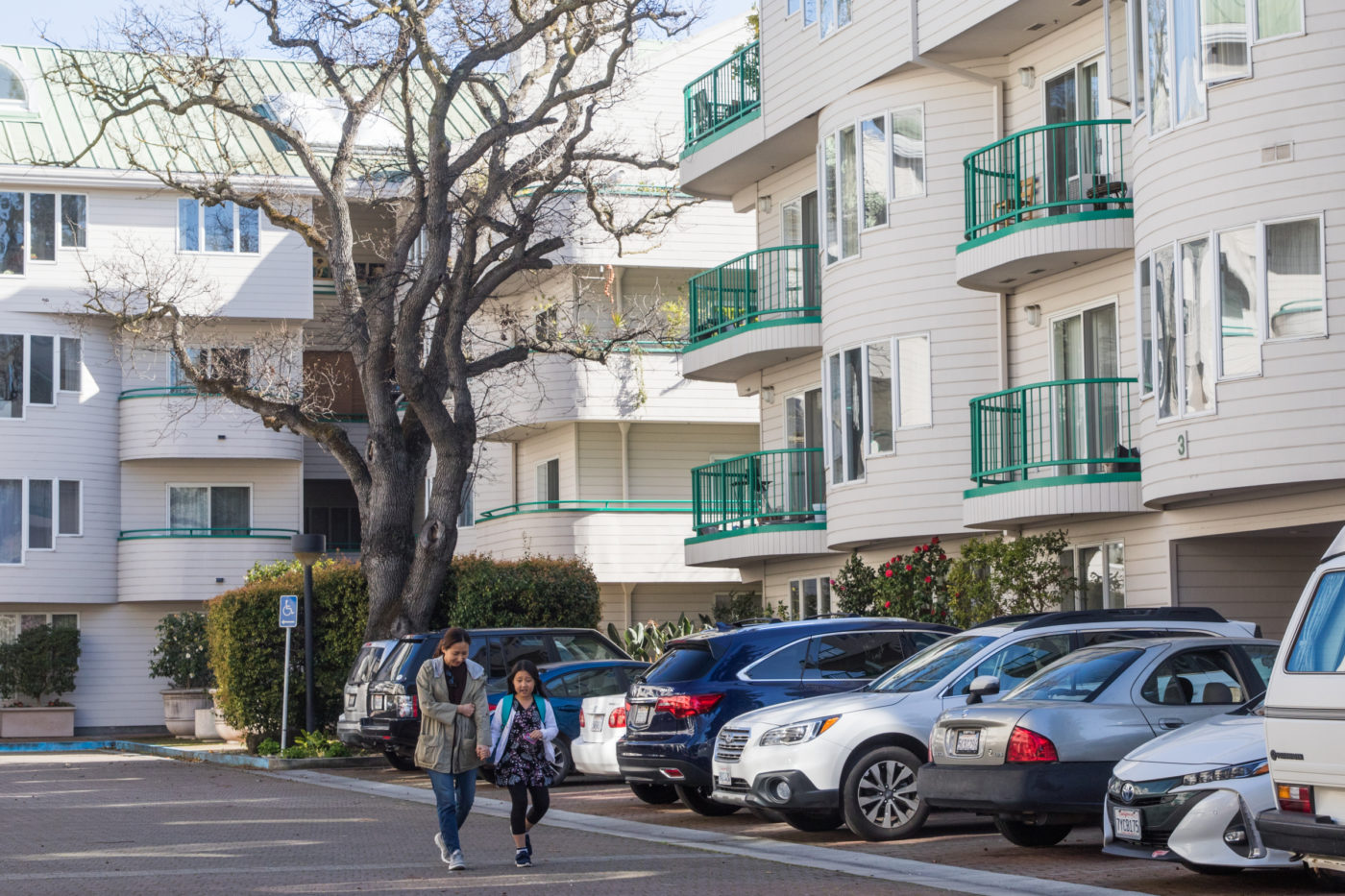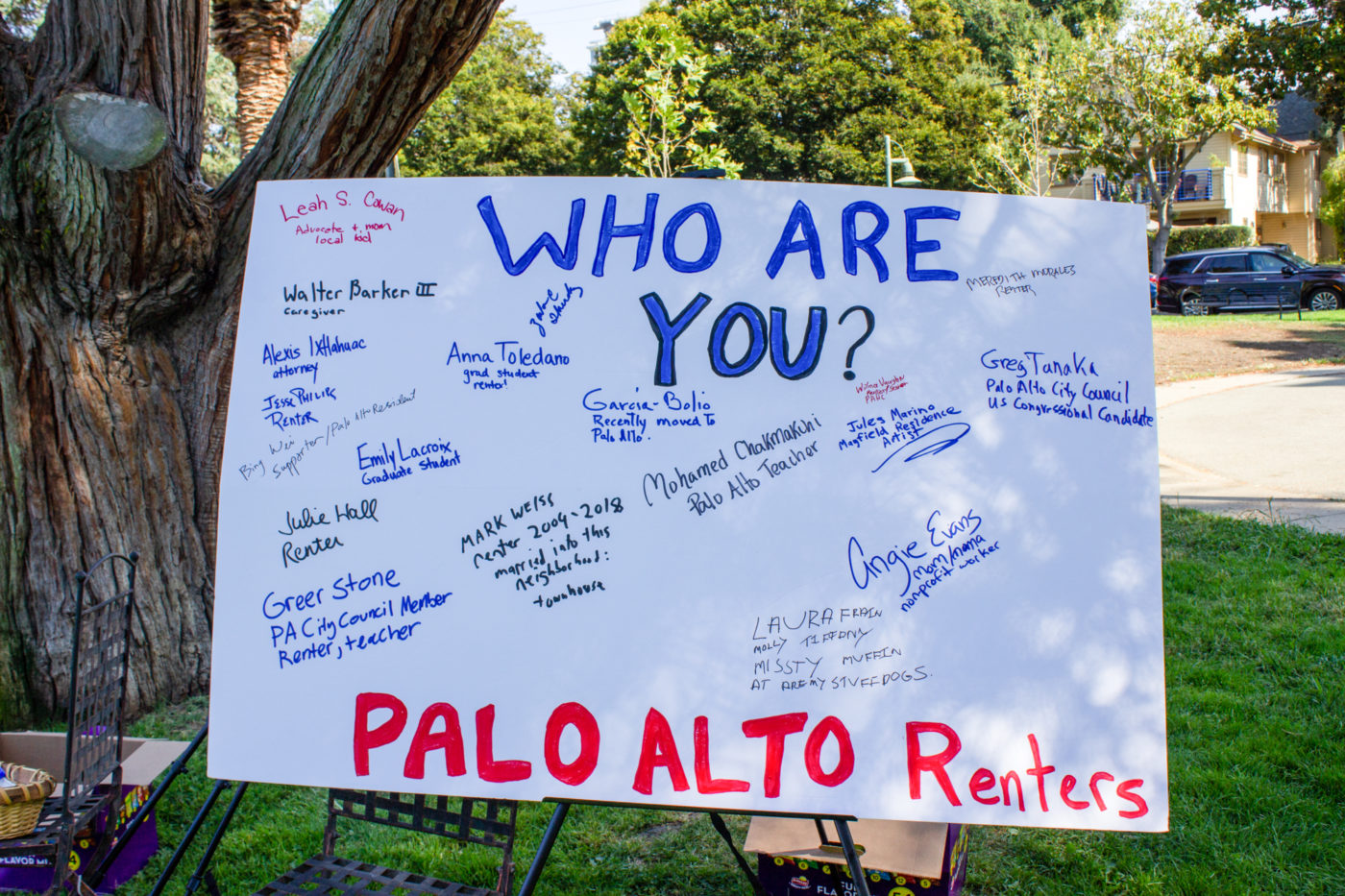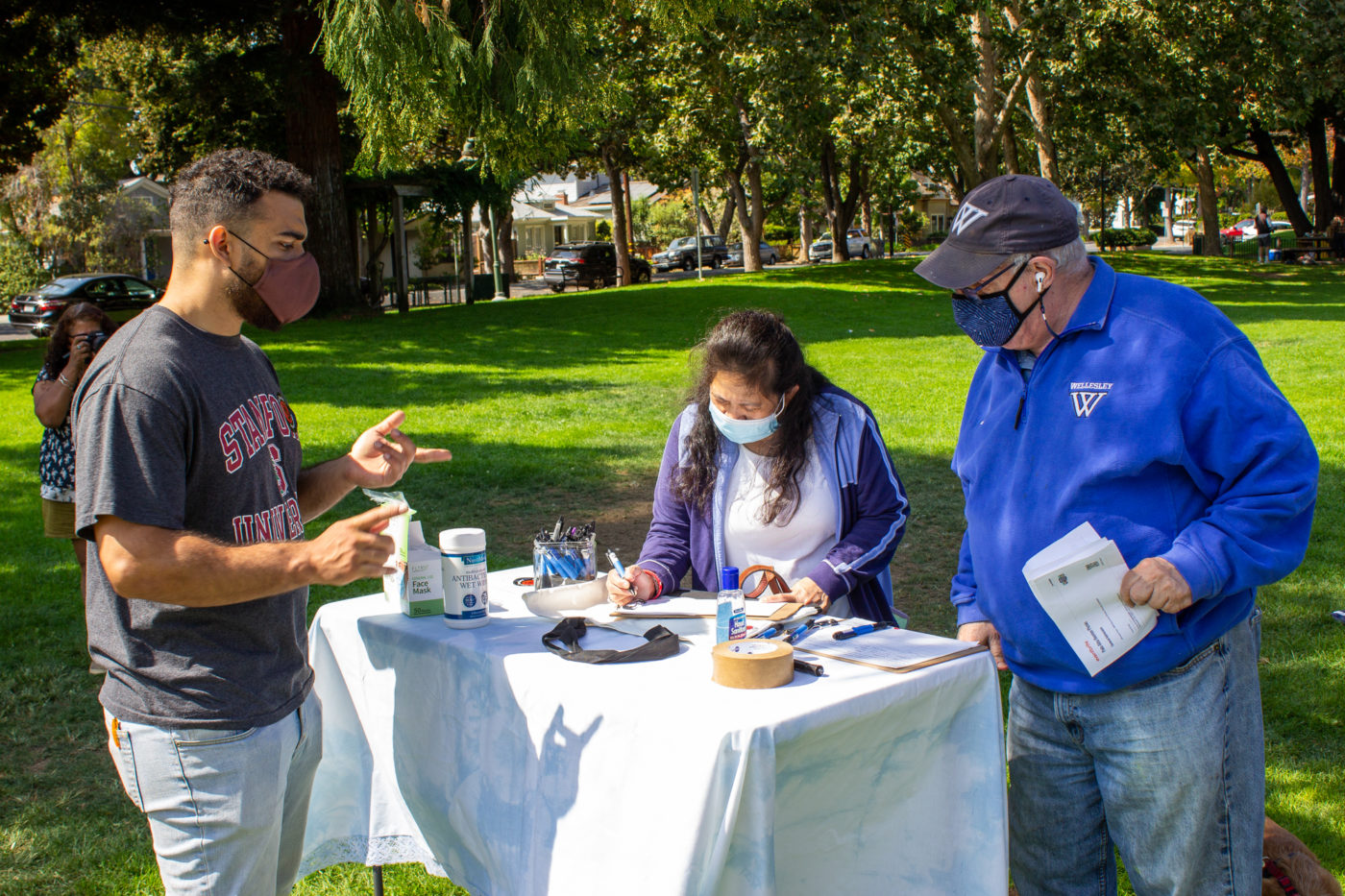SV@Home is proud to provide funding to support the important work of the Palo Alto Renters’ Association, a local grassroots organization advocating for the rights of renters. Rental households make up nearly half of Palo Alto’s housing stock, yet few renters are represented on the city’s public boards and commissions. Since the formation of PARA, the city has already begun to more closely examine renter protections, such as expanded relocation assistance and measures to reduce evictions, prevent rent gouging, and create a renters survey.
BY: Lloyd Lee┃Palo Alto Weekly
PUBLISHED: October 8, 2021
For years, Angie Evans talked about bringing together Palo Alto renters to push the city to protect the rights of tenants. She clearly saw the need many times, including in 2019 when the new owners of the President Hotel evicted its tenants and the City Council declined to intervene.
But it wasn’t until city leaders finally broached the subject of rental protection programs in early 2020 — and the COVID-19 pandemic increased anxieties nationwide about housing security — that Evans saw the perfect moment to launch the Palo Alto Renters’ Association with seven other tenants, in the hopes of giving non-homeowners a voice in the city’s government.
“There wasn’t an exact thing that made this happen,” Evans, 38, said. “It was more like we finally had a group of people who were all interested in working on tenant protections.”
A year later, the grassroots group is in the process of attaining its nonprofit status. It’s also developed four priorities: creating a citywide rent registry, developing a public education campaign, and tackling issues of tenant harassment and subsidized housing.
Ironically, about half of the group’s founders have since left Palo Alto due to challenges created by the pandemic, according to Evans. The remaining founders declined or did not respond in time to requests from the Weekly for interviews.
“People have asked to remain anonymous because it’s really hard to fight for renters’ rights when you know it’s so easy for your landlord to take your house away,” said Evans, a longtime housing advocate and Palo Alto renter since 2014.
The group’s founders included a mix of renters, young adults living at home with their parents, vehicle dwellers and homeless residents. Though there’s no formal membership program yet, Evans said that the association’s email listserv includes around 200 people: teachers, grad students, parents, residents of apartment complexes and multi-family homes.

“I think if you’re going to authentically do renters’ rights work and engage renters, you really have to bring the voices of long-term marginalized tenants together in that decision-making body,” she said.
For Evans, a few glaring numbers propelled the association’s creation: Rental households make up nearly half of Palo Alto’s housing stock, yet few renters are represented on the city’s public boards and commissions. Earlier this year, when the City Council opened applications for Palo Alto’s Housing Element Working Group, about 40 out of the 80 applicants were renters, Evans said.
Out of 17 seats, the city selected one market-rate renter, two below-market-rate renters and one Realtor who owns two homes to represent renters’ within the working group, which will help the city update its housing programs and policies. Despite these appointments, Evans said she believes that renters remain vastly underrepresented.
According to the group, a key starting point for protecting tenants would be the institution of a rent registry, which would provide baseline information about the city’s rental environment.
Already aiding in this effort is Lauren Bigelow, a fellow from Partnership for the Bay’s Future (an organization focused on affordable housing in the Bay Area), who was brought in by the city. Part of Bigelow’s work involves creating a profile of Palo Alto’s renters and researching policies that would benefit them.

Since the group’s formation, the city has started looking closer into rent protections. In April, the Planning and Transportation Commission unanimously approved two programs that will track the city’s inventory of rental properties and provide renter relocation assistance. On Sept. 23, the Human Relations Commission also unanimously recommended four policies that the City Council will consider in November: expand relocation assistance, reduce evictions, prevent rent gouging and create a renters survey. The commission still has an additional five policies to review.
At the very least, Evans said, she’s optimistic the City Council will support a rent registry.
“A rent registry is kind of a no-brainer,” she said. “It provides us with accurate data we need to develop the best public policies for our city.”
The association’s funding largely comes from a grant from SV@Home, a nonprofit that advocates for affordable housing. Part of the money pays for a part-time staff member, Christian Beauvoir, whom the association hired in July to be a community organizer and the public face of the group.

The group is fiscally sponsored by Palo Alto Forward, a nonprofit that focuses on housing and transportation. The sponsorship allows the Renters’ Association itself to operate like a nonprofit organization.
Evans is also the executive director of Palo Alto Forward — a position that has drawn flak from some of the organization’s more vocal detractors — but said she is the only member of the Renters’ Association’s steering committee who comes from Palo Alto Forward. While the two organizations focus on overlapping issues, the goals of the Renters’ Association are geared more toward tenant protection, she said.
Evans traces her local housing advocacy back seven years ago, when she volunteered to help the Mountain View Tenants Coalition rally support for Measure V, which established rent control in Mountain View in 2016.
Her experience with the coalition has guided her more free-handed and grassroots approach to raising awareness about the Renters’ Association.
On a recent weekday, Evans and Beauvoir canvassed downtown Palo Alto, where a mix of large and small apartment buildings as well as multi-family homes blend in with the neighborhood of single family homes. Living in Palo Alto for seven years and experiencing firsthand the arduous search for affordable rent, Evans seemed to know exactly which buildings were apartments, multi-family homes or condominiums, as well as interesting tidbits about a home’s rental history, and who some of the more notorious apartment property managers are in Palo Alto.

With Evan’s guidance, the two stopped by each apartment or duplex and stuck flyers on front doors and parked cars to advertise the group’s first in-person public event at Johnson Park on Sept. 26.
“One of the reasons (Measure V) won is because we just knocked on every door,” Evans said.
The association’s Sept. 26 event drew dozens of people, including Council members Greg Tanaka and Greer Stone, employees from Palo Alto Mediation Program and Silicon Valley Independent Living Center, who were there to educate renters on existing resources in the city.
Most of the 30 or so participants were renters, like Wilma Vaughn, 76, who has lived in Palo Alto for more than 30 years. Vaughn said she was interested in learning more about how the group was bringing together residents to advocate for tenant protections.
Alexis Ixtlahuac, a 31-year-old attorney, came with her friend to show solidarity with other renters who may not be in a more ideal housing situation like she and her husband are. Both pay below-market-rent for a two-bedroom duplex. Her husband is also a medical resident at Stanford.
“It’s beautiful here. There’s so many good things about living here” said Ixtlahuac, who recently graduated from the University of California, Los Angeles’ School of Law. “But the cost of living is the worst part.”

Hebe Garcia-Bolio, a former accountant for Deloitte, was eager to share her housing history, which at one point included a car parked in Modesto. Last month, Garcia-Bolio’s luck changed. She learned that the application she had submitted in 2017 for a one-bedroom studio apartment at Palo Alto’s Sheridan Apartments, an affordable housing community, had been accepted.
Garcia-Bolio said she clearly recalls the date — Friday, Aug. 13 — when she received a call from a manager at Sheridan notifying her that there was a studio available. Under the contract she signed for the apartment, her rent will never exceed more than 30% of her income.
Evans also counts her blessings. She knows what it’s like to live paycheck to paycheck and to have unstable housing.
“You stay until your rent goes up,” she said.
Currently, she and her husband pay “way below-market-rate” for a single-family home in Crescent Park, where she said she regularly sees Mark Zuckerberg run through the neighborhood. Evans is able to keep her rent low because of a generous landlord, she said. She’s lucky in that sense.
“But luck isn’t public policy,” she said.

